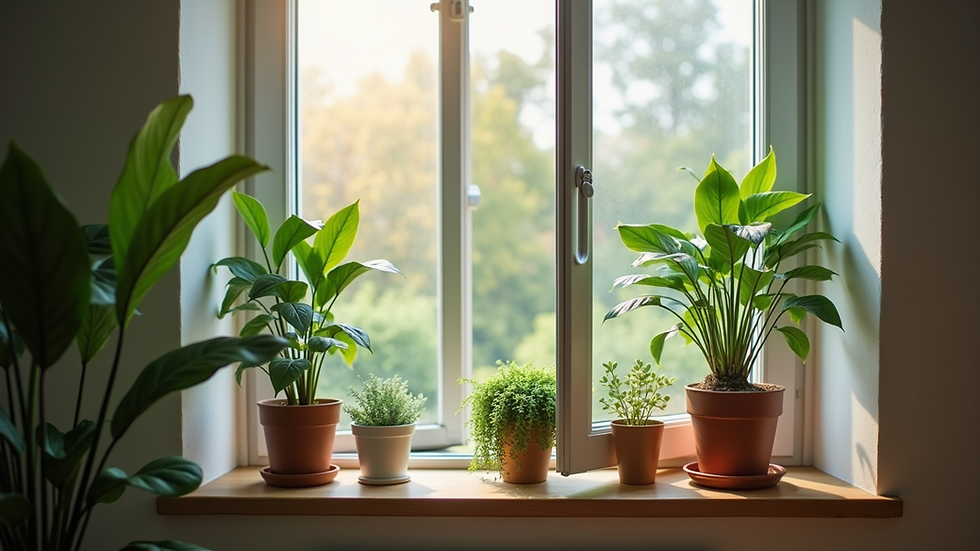Foster a Healthier Living Environment for Your Family
- The Mould Medics

- Mar 8
- 3 min read
Updated: Sep 3
Creating a safe and nurturing space for your family is more important than ever. A home that supports well-being can improve physical health, mental clarity, and overall happiness. This guide offers practical advice and actionable steps to help you foster a healthier living environment for your loved ones. From air quality to cleaning habits, you will find easy-to-implement tips that make a real difference.
Healthy Home Tips for Better Living
Maintaining a healthy home starts with understanding the key factors that influence your indoor environment. Here are some essential tips to get you started:
Improve Indoor Air Quality: Poor air quality can lead to allergies, respiratory issues, and fatigue. Use air purifiers, keep windows open when weather permits, and avoid smoking indoors. Houseplants like spider plants and peace lilies can naturally filter toxins.
Control Humidity Levels: Excess moisture encourages mold growth and dust mites. Use dehumidifiers in damp areas such as basements and bathrooms. Fix leaks promptly and ensure proper ventilation.
Choose Non-Toxic Cleaning Products: Many conventional cleaners contain harsh chemicals that can irritate skin and lungs. Opt for natural or eco-friendly alternatives like vinegar, baking soda, and castile soap.
Regular Cleaning and Decluttering: Dust and allergens accumulate quickly. Vacuum carpets with a HEPA filter, wash bedding weekly in hot water, and declutter to reduce dust traps.
Safe Storage of Chemicals: Store household chemicals, pesticides, and medicines out of reach of children and pets. Use clearly labeled containers and dispose of expired products responsibly.

What are the 5 Basic Requirements for a Healthy Environment?
Understanding the fundamental needs of a healthy environment helps you prioritize your efforts. These five requirements are crucial for any home:
Clean Air: Fresh air free from pollutants and allergens is vital. Regular ventilation and air filtration systems help maintain this.
Safe Water: Access to clean, uncontaminated water for drinking, cooking, and hygiene is essential.
Proper Waste Management: Efficient disposal of household waste prevents contamination and pest infestations.
Adequate Shelter: A structurally sound home that protects from weather extremes and provides comfort.
Healthy Food Storage and Preparation: Prevent foodborne illnesses by storing food properly and maintaining kitchen hygiene.
By focusing on these areas, you can create a foundation for a healthier home environment.

How to Reduce Indoor Pollutants Effectively
Indoor pollutants come from various sources such as cleaning products, building materials, and outdoor air. Here are some strategies to minimize their impact:
Use Ventilation Fans: Install exhaust fans in kitchens and bathrooms to remove moisture and odors.
Avoid Synthetic Fragrances: Candles, air fresheners, and scented sprays often contain harmful chemicals. Choose natural alternatives like essential oils.
Test for Carbon Monoxide: These invisible gases can be dangerous. Use home testing kits and install detectors.
Limit Use of VOC-Emitting Products: Volatile organic compounds (VOCs) are found in paints, adhesives, and furniture. Select low-VOC or VOC-free options.
Regular Maintenance: Clean air conditioning systems and replace filters regularly to reduce dust and allergens.
Implementing these measures will significantly improve the air quality in your home.
Creating a Safe and Comfortable Space for Children
Children are more vulnerable to environmental hazards, so extra care is needed to protect them:
Use Non-Toxic Paints and Materials: Choose products free from lead and harmful chemicals.
Keep Floors Clean: Children often play on the floor, so vacuum and mop regularly.
Secure Furniture and Appliances: Prevent accidents by anchoring heavy items and covering sharp edges.
Avoid Plastic Toys with BPA: Opt for wooden or BPA-free plastic toys.
Create a Quiet, Relaxing Area: A calm space helps children unwind and supports mental health.
These steps ensure your home is a safe haven for your little ones.

Maintaining a Healthy Living Environment Year-Round
A healthy home requires ongoing attention throughout the seasons. Here are some tips to keep your environment optimal all year:
Seasonal Deep Cleaning: Schedule thorough cleaning sessions during spring and fall to tackle dust and allergens.
Inspect for Mold and Pests: Check damp areas regularly and address any issues immediately.
Adjust Humidity Levels: Use humidifiers in dry winter months and dehumidifiers in humid summer months.
Maintain Heating and Cooling Systems: Regular servicing ensures efficient operation and better air quality.
Stay Informed: Keep up with local environmental health advisories and consult professionals when needed.
By staying proactive, you can sustain a healthy living environment that supports your family’s well-being.
Taking these steps will help you foster a healthier living environment for your family. Small changes can lead to big improvements in comfort, safety, and health. Start today and enjoy the benefits of a home that truly nurtures your loved ones.
.png)








